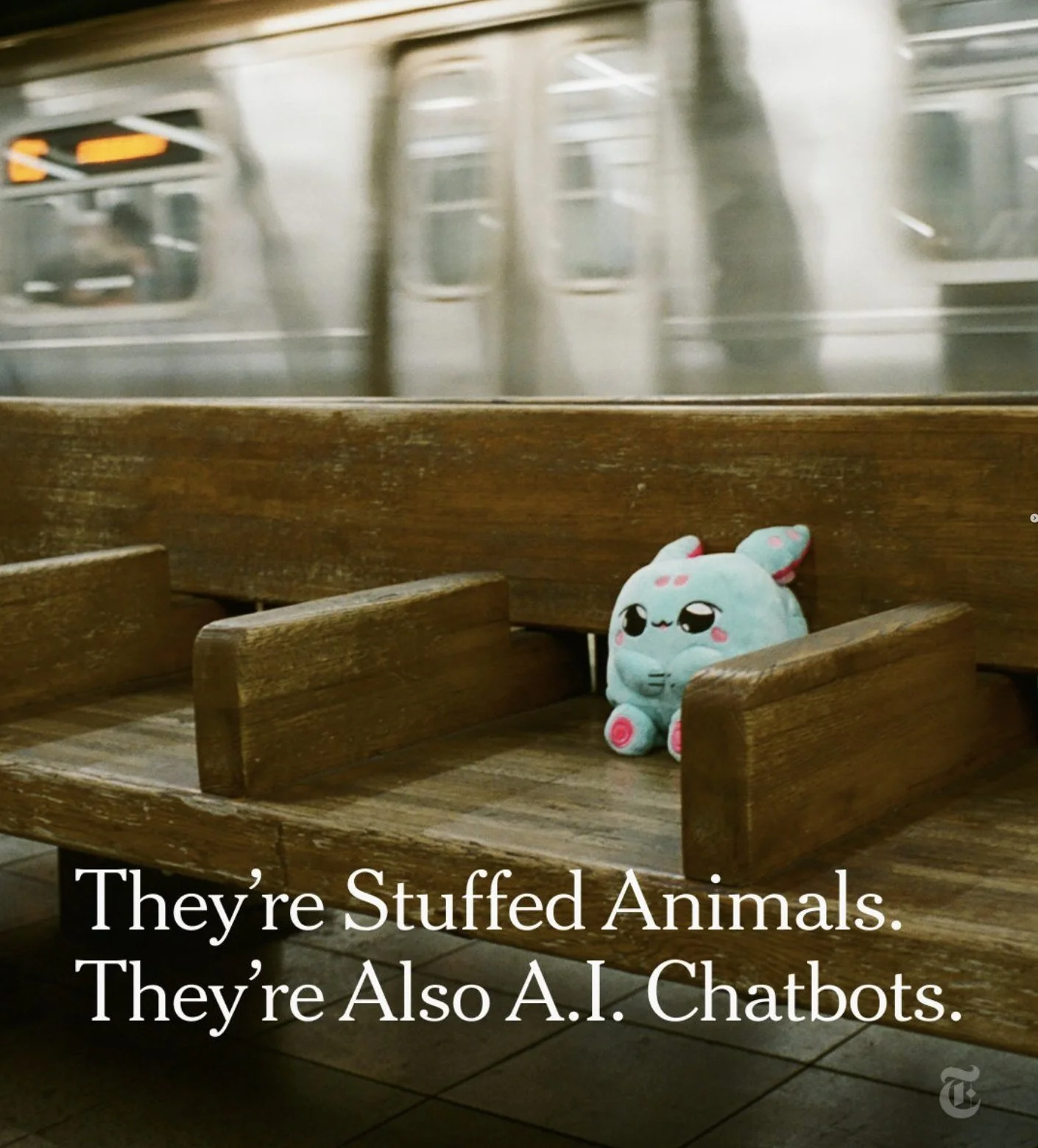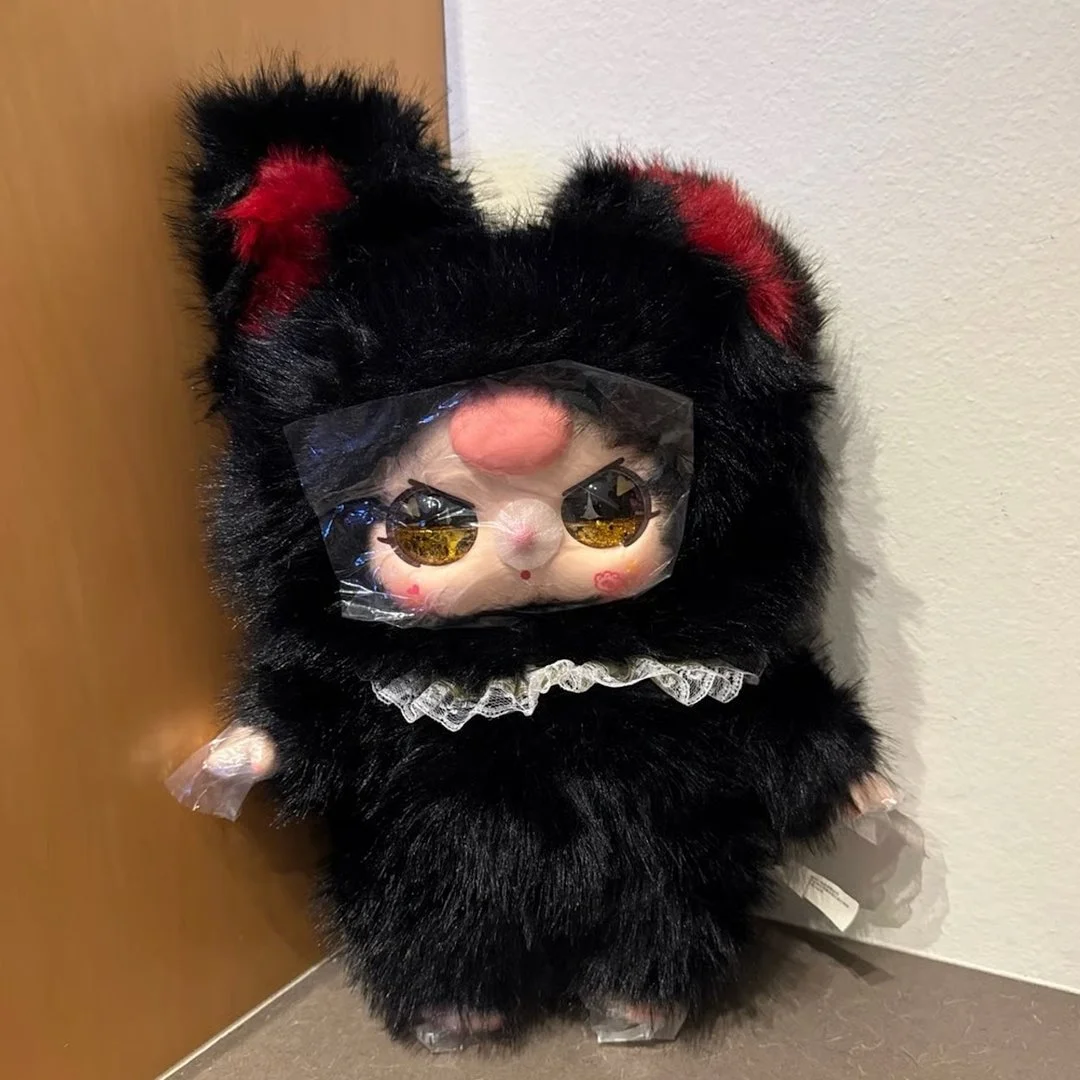AI Plushies Are the Next Big Toy Craze
They’re stuffed animals. They’re also AI chatbots. The rise of AI plushies is reshaping toys across the U.S. and China. | 📸 New York Times
🌍 Prefer another language? This article is also available in English · Español · العربية · 中文 (简体) · हिंदी · Bahasa Melayu—just tap the language switcher in the top‑right corner.
⏰ Wed, Aug 19, 2025 @ 7:30 PM PST
🌊 Published from the Pacific Ocean (I’m flying to Singapore)
🔨 Built by Chase Burns Broderick
I was excited but not surprised to see The New York Times featuring, of all things, an AI doll voiced by singer and mother-to-Elon-Musk’s-children Grimes on its Instagram on Sunday. The responses were as you might expect:
“We’re living in a black mirror episode.”
“Meanwhile we have articles about full grown adults spiraling down an AI hallucination black hole. Kids need fully human connections.”
“What could possibly go wrong…”
Amanda Hess’s breakout feature for the Times profiles Curio, a Bay‑Area start‑up that bills itself as a “magical workshop where toys come to life.” The company operates out of a strip‑mall office in Redwood City, California, where co‑founders Misha Sallee and Sam Eaton introduced Hess to Grem, a fuzzy cube styled like an anime alien.
Curio’s plushies (three in total so far) hide a Wi‑Fi–enabled voice box in a back zipper pocket that connects to an AI language model calibrated for children as young as three. The article frames these screen‑free, chatty plushies as a new alternative to tablets—even a way to offload parental attention—raising questions about how AI companions could reshape childhood.
But beyond Curio’s Grem and its siblings, many other companies are creating AI‑enabled plush companions—which, curiously, the Times overlooked in its profile.
In China, for instance, ToyCity’s “Mr. Pa” is a talking panda plush that offers “empathetic” dialogue and reminders for routines. Start‑ups like FoloToy (below) and Animos sell conversational plushies that answer questions, teach lessons, and support language learning. Haivivi’s BubblePal combines a story generator, a “super encyclopedia,” and memory of the user’s preferences, while MofuDream markets dolls that can talk, blink, move, and allegedly “understand” your emotions.
These offerings, together with U.S. brands, suggest a rapidly growing category of toys that blend cuddly comfort with AI conversation, creating new security risks and raising broader questions around parenting.
Introducing Baby Three’s AI Toy
If Curio’s plushies are the mainstream American story, the art-toy world has its own take: Baby Three AI (800%), a voice-enabled plush spin on Baby Three (a rising trendy toy brand from Shenzhen we’ve been tracking at Blind Box Daily).
I recently bought the AI edition off a reseller on Mercari for $200 USD—it currently retails for $300 USD. Let’s get into it.
Origins and Rise
Baby Three started as a blind‑box toy line from Dongguan, China, in April 2023, and has rapidly grown to become a major player in the country’s ongoing “trendy toy” boom. According to a Chinese industry report, the independent IP sold 20 million units since its launch, and Baby Three’s AI edition (marketed as “Baby Three AI 800%”) builds on that hype.
How Baby Three’s AI Plush Works
Baby Three’s AI doll is essentially a traditional plush (a big one—about 22 inches tall) with a Wi‑Fi voice box hidden in a back zipper.
My cat (Bijou) for scale.
That setup follows five basic steps: (1) Download the companion app on your phone; (2) Add the device within the app; (3) Register or sign in to create an account; (4) Configure Wi‑Fi to connect the plush’s voice box to the internet; and (5) Begin play. The doll can then answer questions, tell stories, and remember previous exchanges.
Baby Three AI (800%) setup guide with Zigma app screenshots: download, power modes, registration, device pairing, 2.4 GHz Wi-Fi configuration, and basic controls.
First Impressions
It's heavy! Weighted and large, the doll sits comfortably at the hip, feeling more like a real baby than standard Baby Three toys. The toy’s AI capability, at the moment, is more like Siri than ChatGPT—meaning, it’s not that smart. I'm not convinced it's more dangerous than, say, YouTube's algorithm for kids. (Though, of course, this trend is continuing, and I can imagine more advanced AI very soon.)
My immediate concern was more around children's privacy. For Baby Three's AI doll, the entire transcript is recorded in its app and accessible to parents or owners. Parents, in some instances, like these controls, as they let them review what the AI doll says to their kids. But there are unintended side consequences, particularly if the child doesn't know they're being recorded. Is this the real Elf on the Shelf? Perhaps.
I asked some of my IG followers to pitch it questions and attached videos above and below. The first question—What are the best 3 animated Japanese movies of all time?—prompted the baby to give a surprisingly thorough answer, although it cut itself off after about a minute of talking. The second question was mainly a joke—What does she think of the LGBT?—(I’m gay) and it ended up being helpful, demonstrating the guardrails developers seem to have built into the bot.
A very politically correct answer!





